A Guide to Railay Posted by sasha on May 12, 2016 in Travel
The beach town of Ao Nang is busy and super touristy, full of shops, massage joints, and plenty of go-go bars. Meanwhile, the rock-climbing mecca of Ton Sai is mostly undeveloped, with dirt roads, simple digs, and a steady stream of backpackers. If these two options seem like they’re on two extreme ends of the traveling spectrum, it’s because they are. But what about those who aren’t looking for burgers and ladies of the night? Or those who prefer a few creature comforts and aren’t so keen on getting stoned and watching fire spinners? Thankfully, there’s still a place in this corner of Thailand for you – Railay (อ่าวไร่เลย์).
Almost an Island
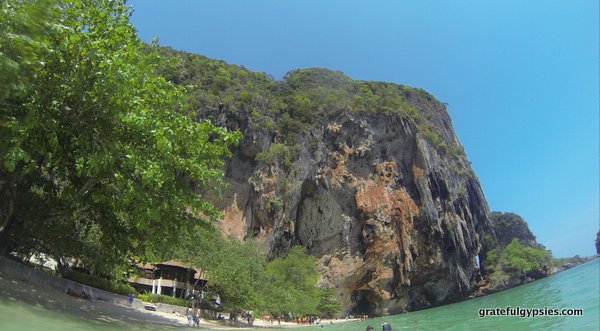
Not quite an island, but close.
Also known as Rai Leh, this small peninsula is located between Ao Nang and the city of Krabi. While it’s not an island, it certainly feels like one – the only way to get here is by boat, as huge limestone cliffs block it off from the rest of the mainland. It’s a short ride in a long-tail boat from Ao Nang to get here, and costs just 100 Baht/person. You can also take larger ferries here from Ko Phi Phi, Ko Lanta, and Phuket, but will still end up on a long-tail boat for the end of the journey.
Postcard Worthy Scenery
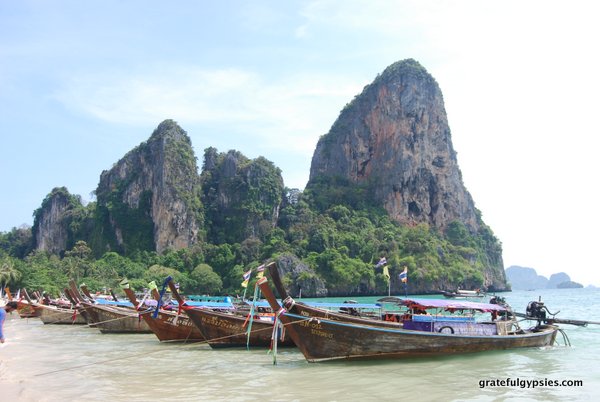
Like living in a postcard!
With towering limestone crags in all directions and turquoise waters, it’s no wonder that many describe the scenery here to be some of the most beautiful in all of Thailand. Walking along any of the beaches in Railay, it’s not an exaggeration to say that it feels as if you’re inside of a postcard. Just keep in mind that during the high season, you’ll be sharing these views with hordes of other tourists.
East or West?
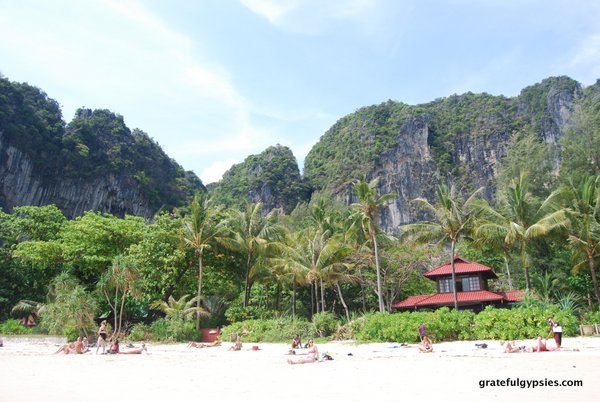
West Railay Beach
Railay has four primary areas – Railay East and West, Ton Sai, and Phra Nang. Ton Sai feels worlds apart and, outside of high tide, isn’t exactly easy to get to and from. Those planning to spend most of their time lounging on the beach are much better off just choosing between Railay East or West.
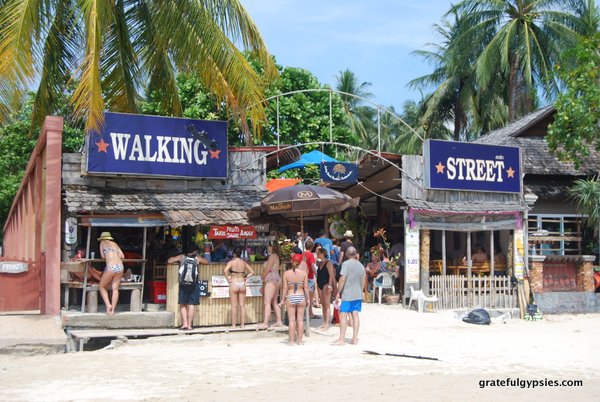
Walking Street on West Rai Leh.
The western side has the largest and most popular beach as well as the shopping street with plenty of options for dining and drinking. This all comes at a cost, though – there’s really no budget accommodation to speak of here.
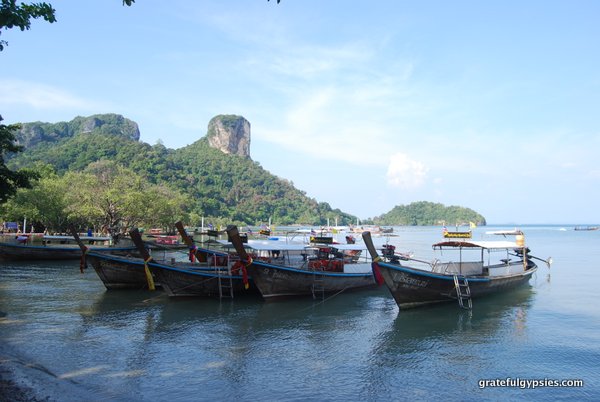
East Rai Leh – not much of a beach here.
On the other side, the beach is covered in mangroves and isn’t particularly great for swimming. There is a boardwalk here with quite a few restaurants and bars, though. Railay East has also has a wide range of accommodation, with everything from cheap backpacker digs up to luxury pool villas. If you can’t make up your mind between the two, you can always just stay somewhere inland and put yourself within a 10-20 minute walk of either side.
A Climber’s Paradise
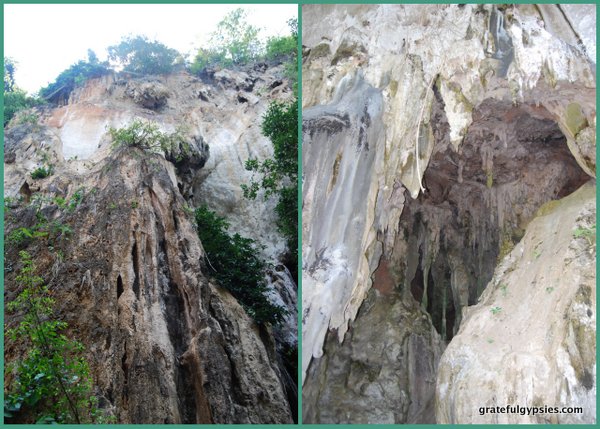
A rock climbing paradise.
Home to over 700 bolted routes, it should come as no surprise that Railay is quite popular with rock climbers. Whether you’re an absolute beginner or a pro, you’ll find something here. There are a few schools here, where you can sign up for a variety of courses or just rent gear. Railay is also home to the Rock and Fire International Contest every year. It takes place in mid-April and anyone can sign up.
The Penis Cave
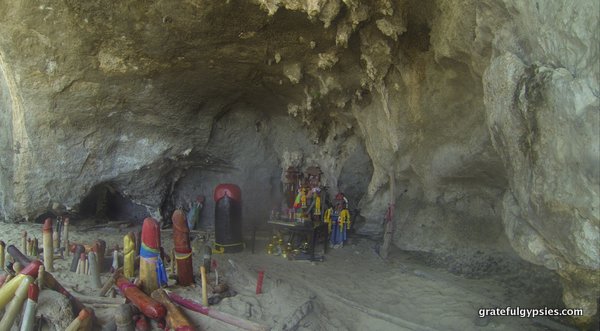
Phra Nang Cave Shrine
One of the most interesting things about Railay is without a doubt the Phra Nang cave shrine. Dedicated to the spirit of a drowned princess and a symbol of fertility. Local fishermen have been leaving elaborate wooden phalluses here for years, as they believe doing so will bring them “increased potency and prosperity.” The phallic offerings come in all shapes, sizes, and colors, and certainly make for an interesting photo opp.
Rather than choose just one of these popular areas in Krabi province, why not just hit them all? With one week, you could easily spend a couple of days in Ao Nang, Ton Sai, and Railay. As you’ve seen through all of our posts, the three may be geographically close, but they’ve each got their own vibe and all offer a different experience to travelers.

Build vocabulary, practice pronunciation, and more with Transparent Language Online. Available anytime, anywhere, on any device.
About the Author: sasha
Sasha is an English teacher, writer, photographer, and videographer from the great state of Michigan. Upon graduating from Michigan State University, he moved to China and spent 5+ years living, working, studying, and traveling there. He also studied Indonesian Language & Culture in Bali for a year. He and his wife run the travel blog Grateful Gypsies, and they're currently trying the digital nomad lifestyle across Latin America.



